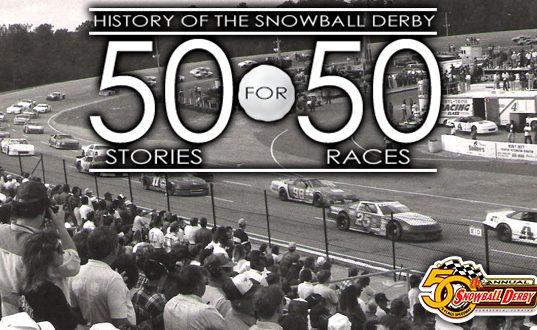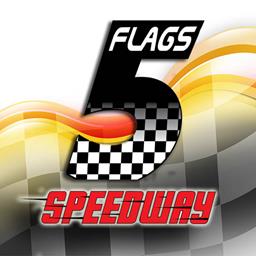In 1970, Wayne Niedecken outlasted the field on skinny tires to win the Snowball for the second time. He pitted on the 67th lap for fuel but never changed tires.
The race was a disaster for tires as only 12 of the 36 runners finished the event. Chuck Arnold led a good portion of the race and was on the same strategy as Niedecken, only to pop a tire in the final laps.
The 200-lap distance was upped to 250 laps in 1977 and 1978 before it went back to 200 laps in 1979.
In 1982, Gene Morgan led a race where only the top five drivers were on the lead lap.
By 1988 the distance was extended to 300 laps after two years of it returning to 250 laps. The 300 laps would now allow the race to rival the Winchester 400 and the All American 400.
In 1989, only the top-four finishers were on the lead lap. Rick Crawford won the last 300-lap event that would be held for quite some time.
From 1990 to 1997 the race would add a special feature as the race’s distance would be 300 laps plus whatever running of the race it was. In 1990, the race was 323 laps as it was the 23rd running of the Snowball Derby.
The extra distance began to draw a series of crash-filled races. From 1993 to 1997, there was an average of 20 yellow flags at the Derby and over 100 caution laps during four out of five of those races.
In 1996, the race’s extra distance was ballooned to 336 laps thanks to a green-white checkered finish.
In 1998, the race returned to it’s 300-lap format. However, since it’s return there have been 82 extra laps run thanks to overtime and the green-white checkered finish. Seven times in 19 years the distance was extended due to the green-white checkered finish.
The saying is that “you have to be there at the finish,� but the toughest thing about the Snowball Derby is you have no idea when that finish is going to be.
Finishing is finishing. If you are down a few parts or you need a little tape to get there, it only matters that you do indeed get there.
-By Elgin Traylor, Speed51.com Southeast Correspondent
 Over the years, we have seen some interesting things at the Snowball Derby. Wild finishes, heavy attrition and drivers winning with crash damage and/or no hood. At 300 laps, the Derby is one of the biggest tests of endurance in short track racing. However, the race hasn’t always been the 300-lap distance it is today. In fact, it’s been ever-changing since the first Snowball Derby.
Over the years, we have seen some interesting things at the Snowball Derby. Wild finishes, heavy attrition and drivers winning with crash damage and/or no hood. At 300 laps, the Derby is one of the biggest tests of endurance in short track racing. However, the race hasn’t always been the 300-lap distance it is today. In fact, it’s been ever-changing since the first Snowball Derby. 




















